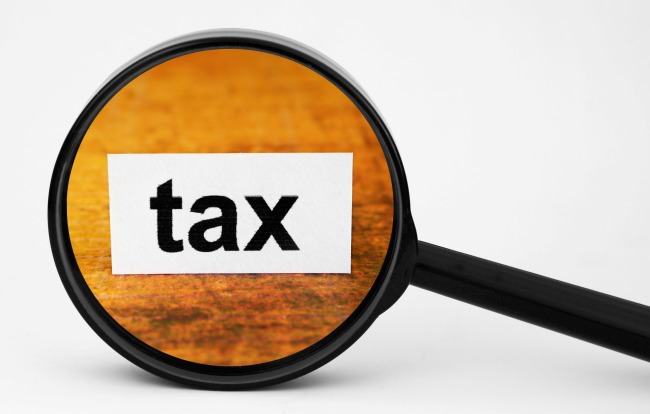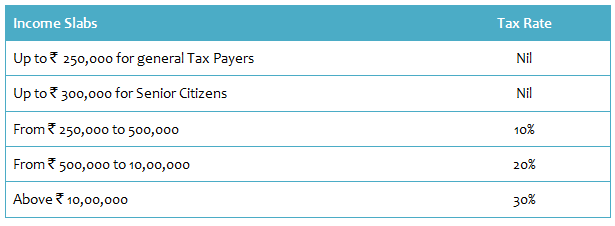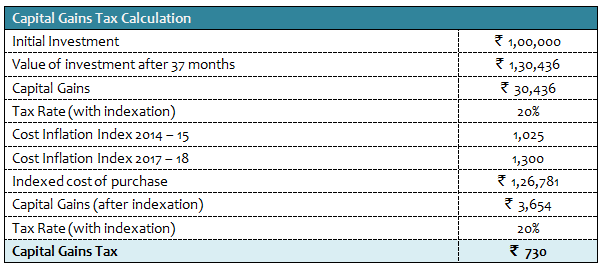Mutual fund taxation in FY 2015 2016

An important aspect of investment planning is to assess the impact of taxes on your investment returns, so that you can make the right investment decision and also file your income tax returns correctly. In this article we will discuss mutual fund taxation. Before we get into the nitty gritties of mutual fund taxation, let us recap the exemption limits, income tax slabs and key deductions, since some important changes were introduced by the Government over the past 12 months.
Income tax Slabs: The table below summarizes the income tax rates for individuals and Hindu Undivided Families.

Allowable Deductions: Various deductions are allowed from your gross taxable income under various provisions.
Section 80C:
A deduction ofर1.5 lacs from your gross taxable income is allowed for investments under Section 80C. Investments eligible for 80C deduction include employee provident fund, voluntary provident fund, public provident fund, life insurance premiums, mutual fund equity linked savings schemes (ELSS), National Pension Scheme, Post Office Time Deposit, home loan principal repayment etc.Section 80CCD:
A further deduction ofर50,000, over and above the Section 80C limit ofर1.5 lacs, has been allowed for investment in the National Pension Scheme. Therefore the total deduction allowed under Section 80C and 80CCD is nowर2 lacs.Section D:
Maximum allowable deduction for health insurance or Mediclaim premium under Section 80D has been increased toर25,000 for self, spouse and dependent children. The applicable deduction for senior citizens isर30,000. If an individual pays for medical insurance of parents who are senior citizens, then he or she can claim a total deduction ofर55,000.Section 24:
The maximum deduction on account of interest paid on home loan for a self occupied property has been raised toर2 lacs per annum.Transport Allowance:
Deduction towards Transport Allowance has been increased fromर800 toर1600 per month.
While a number of other changes have also been introduced, which will discuss in another blog, the Finance Minister said in his Budget speech that the total tax benefits available to individual taxpayer will now be र 4.44 lacs.
Let us now discuss how mutual fund returns are taxed. There are the two different kinds of returns from mutual funds:-
Capital Gains: Capital gain is the appreciation in the value of the units of a mutual fund at the time of the sale. From a tax standpoint, there are two types of capital gains.
- Short term capital gain: If the units are sold within the period defined under tax laws, then it leads to short term capital gain.
- Long term capital gain: If the units are sold after a period defined under tax laws, then it leads to long term capital gain.
Dividends: Dividends are profits returned by the mutual fund to the investor at regular intervals. However, the intervals are not certain and dividend amount is also not fixed.
The tax treatment of capital gains and dividend incomes are different. Tax treatment is also for different types of mutual funds. Let us discuss it one by one.
Equity Funds
From a tax perspective, a fund in which at least 65% of the portfolio is allocated to equities is an equity fund. Diversified equity funds, sector funds, ELSS and balanced funds with more than 65% of its portfolio allocated to equities are categorized as equity funds from a tax standpoint. The minimum holding period for long term capital gains in equity funds is one year. Short term capital gains (if the units are sold before one year) in equity funds are taxed at the rate of 15% plus 3% cess. There is an additional surcharge for investors whose annual income exceeds र 1 crore. There is no capital gains tax on the sale of equity fund units held for a period of more than one year. While dividends of mutual funds are tax free in the hands of the investors, for equity funds the dividend distribution tax is zero even for the fund house. Here is a quick recap of tax treatment of equity funds.

For equity funds there has virtually been no change in taxation in the last 12 months. The only change is that the tax saving limit for investment in ELSS has been increased to र 1.5 lacs from FY 2014 - 15.
Debt Funds
A number of changes have been introduced in the taxation of debt funds over the last 12 months. From a tax perspective, a fund in which less than 65% of its portfolio allocated to equities is a debt fund. Debt funds from a tax standpoint include liquid funds, ultra short term debt funds (formerly also known as liquid plus funds), short term debt funds, income funds, gilt funds and also monthly income plans. The minimum holding period for short term capital gains in debt funds is now three years. Short term capital gains (if the units are sold before three years) in debt funds are taxed as per applicable tax rate of the investor. So if your taxable income is above Rs 10 lakhs then short term capital gains tax of your debt fund sale is 30% plus applicable cess and surcharges. Long term capital gains of debt fund are taxed at 20% with indexation. To calculate capital gains with indexation, you should index your purchasing cost by multiplying the purchasing cost with the ratio of the cost of inflation index of the year of sale and cost of inflation index of the year of purchase, and then subtract the indexed purchasing cost from sales value. Let us understand how to calculate long term capital gains tax with indexation with the help of an example. Assume you want to invest र 1 lac in an income fund for 37 months. The pre-tax return of your investment is 9% on a compounded annualized basis. You are in the 30% tax bracket. The annual inflation rate is 8% the over the investment horizon (the inflation index rose by 9% between FY 2014 to FY 2015). The table below shows the calculation of long term capital gains tax with indexation.

While dividends are tax free in the hands of the investor, the fund house pays dividend distribution tax before distributing dividends to investors. A number of changes have been announced in the past 12 months with respect to divided distribution tax in debt funds. The surcharge has been increased to 12% and method of calculating dividend distribution tax has been changed. The dividend distribution tax on dividends declared by debt fund schemes is 25% plus 12% surcharge plus 3% cess. Prior to FY 2015, dividend distribution tax was calculated on the net dividends received by the investor, but from July 2014 dividend distribution tax is calculated on the gross dividend, i.e. the dividends declared before DDT. The change in DDT computation method will result in slightly lower dividends compared debt fund dividends prior to FY 2015.
Here is a quick recap of tax treatment of debt funds.

Choosing between growth and dividend option in debt funds?
If your investment horizon in a debt fund is less than three years, you should let your tax status determine the choice between the growth option and dividend or dividend re-investment option. If you fall in the 10% and 20% tax bracket, then you should opt for the growth option. If you are in the 30% tax bracket, you should opt for the dividend or dividend re-investment option (please see the table below).

For an investment horizon of 3 years, long term capital gains tax applies. You should opt for growth or dividend option based on your investment objectives, i.e. capital appreciation versus income needs.
Gold Funds
Tax treatment of Gold ETFs and Gold fund of funds is the same as debt funds.
Arbitrage Funds
Arbitrage funds aim to give risk free returns to the investors. Since arbitrage funds are risk free by definition, they are often compared to liquid funds. However, the tax treatment of arbitrage funds is same as equity funds, since these funds invest in equity instruments. If you opt for the dividend option in an arbitrage fund, then the fund does not have to pay dividend distribution tax, unlike debt and liquid funds. If you hold your arbitrage fund for over a year, the long term capital gains tax is nil.
Conclusion
In this article, we have discussed the effect of taxes on your mutual fund investment. You should pay due attention to the impact of taxes on your investments and plan your investments accordingly, so that you achieve your investment objectives by maximizing the post tax returns from your investment.
RECOMMENDED READS
LATEST ARTICLES
- Why you need to have hybrid mutual funds in your portfolio: Different types of funds Part 2
- Why you need to have hybrid mutual funds in your portfolio: Misconceptions Part 1
- Which is the best time to invest in mutual funds
- Economic slowdown: Is it real and what should you do
- Importance of liquidity in investing: Mutual funds are ideal solutions
An Investor Education Initiative by ICICI Prudential Mutual Fund to help you make informed investment decisions.
Quick Links
Follow ICICI Pru MF
More About ICICI Pru MF
POST A QUERY




